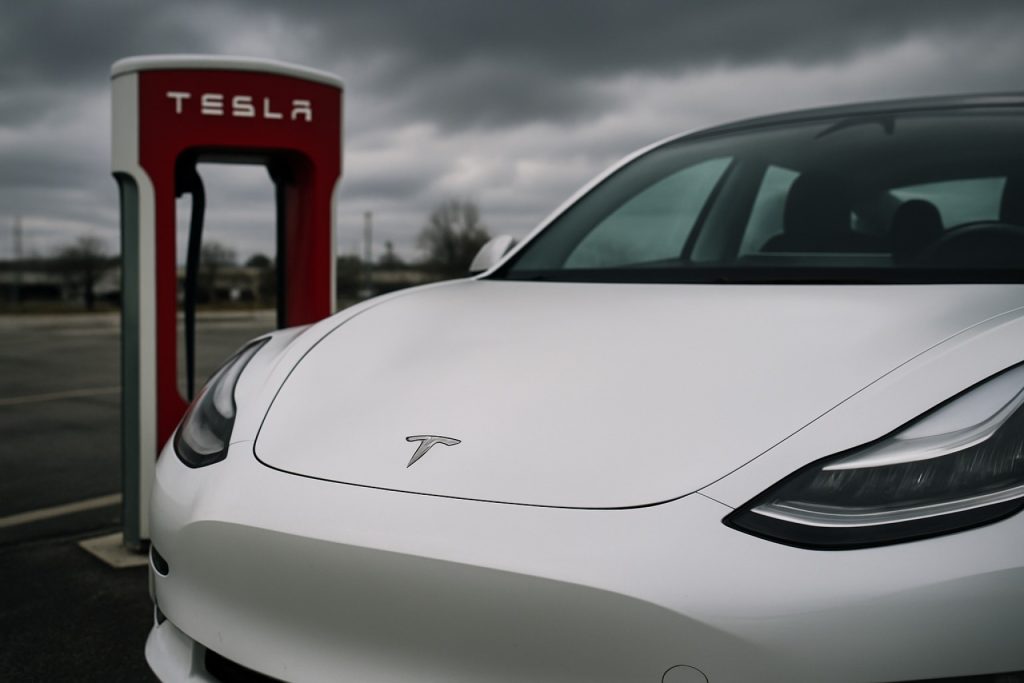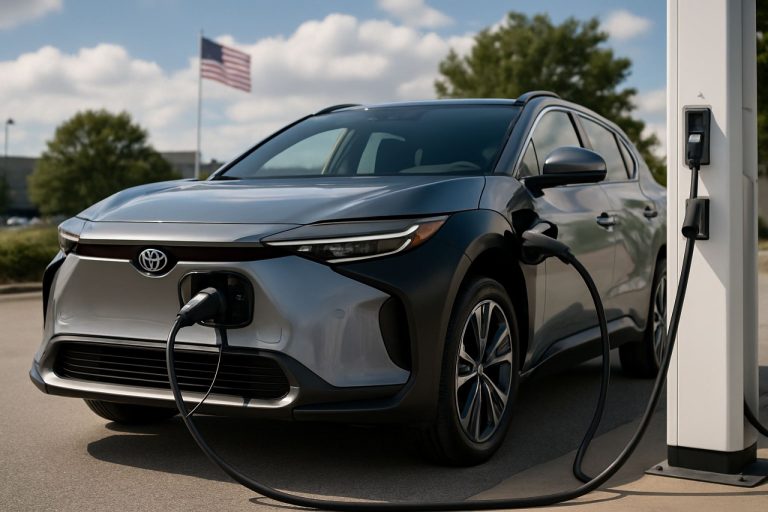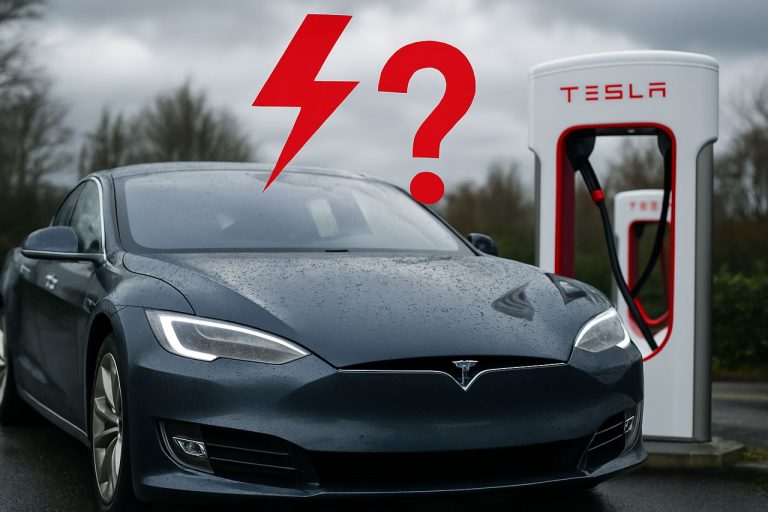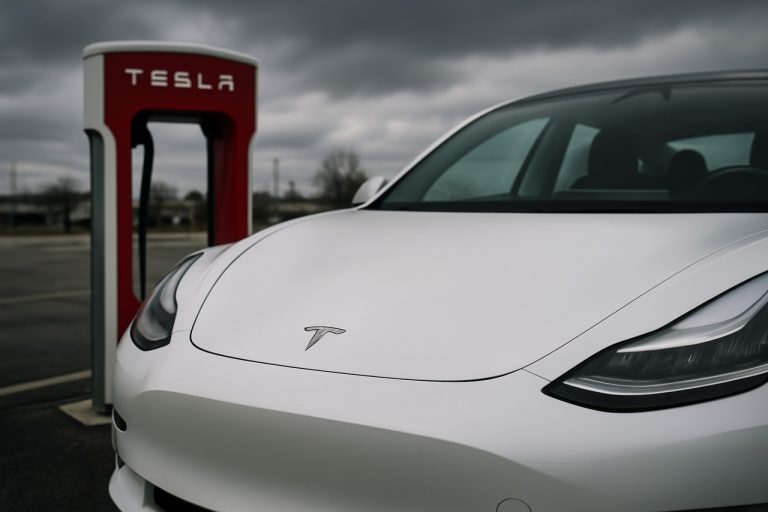
- Tesla faces declining electric vehicle sales, waning consumer trust, and increased competition, challenging its position as an industry leader.
- Promised innovations—like autonomous robotaxis—remain delayed, straining customer confidence and complicating lease return expectations.
- Cybertruck registrations and resale values have sharply declined, signaling diminished excitement for Tesla’s newest models.
- Tesla’s average used car prices are falling significantly faster than competitors, reflecting weakening brand demand.
- Global challenges, such as tariffs and political controversies, further threaten Tesla’s growth amid rapid expansion of rival automakers.
- The electric vehicle market as a whole remains robust, but enduring success now requires not just innovation, but also reliability and restored public trust.
https://youtube.com/watch?v=UFQZPq6mXp0
Clouds gather over Tesla as the world’s most famous electric vehicle company hits a stormy patch of declining sales, shaken consumer trust, and splashy stumbles on the road to innovation. The once-invincible automaker, celebrated for bulldozing barriers in the EV market, now scrambles to defend its reputation as fresh setbacks cascade across its brandscape.
Promises Deferred, Trust Compromised
For years, Tesla has fed the public’s imagination on a high-voltage diet of ambition: robotaxis gliding autonomously through city streets, radical new vehicles poised to upend the status quo, and a future where gasoline engines are only a memory. Yet, as 2024 unfolds, fissures appear in this carefully constructed vision.
A flashpoint recently ignited among U.S. lessees, as buyers discovered their Tesla vehicles—thought to be destined for a futuristic robotaxi fleet—were instead re-entering the resale market, upgraded via over-the-air updates and fetching higher prices than many lease-end customers could access. This maneuver, originally justified by self-driving dreams, now feels less like innovation and more like strategy that sidesteps consumer expectations. The promised robotaxi revolution lingers always just out of reach, hurting Tesla’s trust capital just as it faces stiffer competition worldwide.
Cybertruck’s Slide: The Steel Titan Toppled
With its audacious stainless steel exoskeleton and angular, post-apocalyptic silhouette, Tesla’s Cybertruck stormed onto the automotive stage promising to dominate the electric pickup market. Yet reality bites. Recent data highlight the model’s fizzling momentum: while other electric trucks quietly gain traction, Cybertruck registrations for March clocked in at only 2,170. Rival Ford’s F-150 Lightning zipped ahead, logging around 2,570 registrations in the same period. Even more damning, used Cybertruck prices have plummeted a staggering 46% over the past year, a tailspin magnitudes greater than industry averages.
Across all Tesla models, the downward trend is inescapable. CarGurus, a trusted used-car data firm, reports Tesla’s average selling prices are falling nearly ten times faster than those of mainstream rivals. Meanwhile, once-loyal fans—rattled by shifting policies, divisive public statements from CEO Elon Musk, and the lingering promise of breakthroughs that never quite materialize—are left questioning if Tesla can still deliver on its monumental promises.
Bigger Picture: Brand Under Siege, Market in Flux
Tesla’s current malaise arrives at a time of swelling global headwinds. Intensified tariffs, especially in Europe and China, threaten to inflate manufacturing costs, while protests and eroding goodwill complicate expansion plans. The company’s internal focus, tangled with evolving political controversies, only magnifies public scrutiny at a crucial juncture for EV adoption.
Yet, even as Tesla stumbles, the broader electric vehicle movement powers ahead. Analysts—and even cautious long-term investors—recognize that Tesla’s pioneering work has permanently altered the automobile industry. Battery prices continue to drop, charging infrastructure expands, and once-skeptical consumers now see electric mobility as credible and attainable. Ford, Volkswagen, BYD, and a dozen others advance faster, unwilling to let Tesla dominate the narrative any longer.
The Road Ahead
Tesla’s challenges, while daunting, aren’t insurmountable. The automaker weathered doubters before and still possesses deep resources—both financial and intellectual. But one thing is clear: innovation without execution, and vision without trust, may gradually erode its hard-earned advantage.
For now, the message is plain. The future of electric vehicles will be more competitive, more turbulent, and less certain than ever before. Trust will matter. Execution will matter even more. And even industry giants must prove themselves again and again.
Key Takeaway: Tesla’s legacy is remarkably strong—but today’s storm reveals that true automotive leadership demands more than bold promises and viral unveilings. Only consistent delivery and renewed trust will light the way forward in the electrifying world of mobility.
Tesla’s Turbulent Ride: Fresh Setbacks, Surging Rivals & What EV Buyers Should Know Now
Tesla Faces Fierce Headwinds As Industry Rivals Accelerate: Deeper Insights, Life Hacks & Buying Advice
Tesla, the undisputed trailblazer of the electric vehicle (EV) revolution, is hitting a rough patch. While the company continues to capture headlines—with both bold innovation and controversial missteps—its dominance is under greater threat than ever. Here’s a deeper dive into what’s happening behind the scenes, what it means for EV shoppers and investors, and real-world tips on navigating the shifting landscape.
1. Additional Tesla Facts: What the Original Article Didn’t Cover
- Layoffs & Brain Drain: 2024 has seen significant layoffs at Tesla, reportedly impacting thousands, including top engineering and Supercharger team leaders (source: Reuters, CNBC). Talent loss at this scale can impact future innovation pace and quality.
- Supercharger Network Stall: Once a pillar of Tesla’s moat, the Supercharger network faces uncertainty after sudden layoffs, potentially stalling expansion and maintenance just as Ford, GM, and others adopt the NACS plug standard, opening up their own networks to non-Teslas.
- Software Reliability Issues: Despite software prowess, repeated Full Self-Driving (FSD) beta recalls have raised safety issues. The NHTSA recently compelled Tesla to issue multiple updates after reports of erratic driving and failure to stop at traffic signals.
- Quality Control Concerns: J.D. Power and Consumer Reports surveys continue to highlight build quality and reliability issues, especially with new releases like Cybertruck, which faces complaints about panel gaps and inconsistent materials.
- China Dynamics: In Tesla’s biggest market outside the U.S., domestic rivals such as BYD and Nio are grabbing market share with lower-priced and feature-rich EVs. China’s EV growth has far outpaced Tesla’s as BYD takes the lead in monthly sales (source: Bloomberg).
- Model Lineup Aging: Aside from Cybertruck, most Tesla vehicles—the Model S, Model X, Model 3, and Model Y—have seen minimal exterior design updates for years, which may dull buyer excitement in a rapidly innovating segment.
- Price War Pressures: Tesla’s aggressive price cuts, while boosting demand in the short term, have eroded margins and triggered similar reductions across the industry, squeezing profits for all players.
- Leadership Turbulence: Elon Musk’s high-profile political and social media statements continue to generate controversy, creating brand risk and potential consumer backlash (source: New York Times).
2. How-To Guide: Buying an EV During Market Volatility
- Compare Depreciation Rates: Use platforms like CarGurus and Edmunds to track used vehicle values. Tesla models are currently depreciating faster than most rivals—savvy buyers may find post-2022 models at substantial discounts.
- Inspect Before You Buy: Given reports of variable quality, consider a third-party inspection before purchasing a used or new Tesla, especially the Cybertruck.
- Check Software Status: Verify what software features are included (e.g., FSD) and if there are pending updates or recalls that affect the car’s performance or safety.
- Evaluate Incentives: Federal and state EV credits are shifting rapidly; check eligibility as incentives are often specific to model, price, and buyer’s income (visit U.S. DOE’s site for the latest).
3. Life Hacks & Real-World Use Cases
- Charging Alternatives: With possible delays in Tesla Supercharger expansion, ensure you have access to alternative fast-charging networks like Electrify America or EVgo, especially for road trips.
- Max Out Over-the-Air Updates: Regularly connect your Tesla to Wi-Fi to ensure you get the latest safety fixes and features as soon as they’re available.
- Cross-Shop Aggressively: The EV field is now flush with options—test drive competing models from Hyundai, Kia, Ford, and Volkswagen; many match or exceed Tesla’s range and tech at lower prices.
4. Feature Reviews, Specs & Pricing: Tesla vs. the Competition
- Tesla Model Y (2024): About $43,990 base price; 330-mile EPA range; minimalist interior, industry-leading acceleration, but sparse physical controls and inconsistent panel quality.
- Ford F-150 Lightning: Starts at $54,995; 230-320 miles range; traditional truck practicality, good towing, Ford dealer network support.
- Hyundai Ioniq 5/Kia EV6: Both start around $41,000; ~300 miles range; ultra-fast charging (800V architecture), more upscale interiors, robust safety tech.
5. Market Forecasts & Industry Trends
- Global EV Sales: Projected to hit 17 million units in 2024, up from around 14 million in 2023 (source: IEA). China and Europe remain the largest EV markets, growing faster than the US.
- Battery Prices: Battery costs have fallen below $100 per kWh in China—an industry milestone that allows cheaper EVs and profit for automakers (source: BloombergNEF).
- Rising Competition: Non-Tesla brands now represent over 50% of new US EV registrations, according to Cox Automotive 2024 data.
6. Security, Sustainability & Limitations
- Security: Tesla vehicles lead with high levels of connectivity, but this can make them targets for hackers. Tesla actively issues patches but owners should enable two-factor authentication and routinely update their apps.
- Sustainability: Tesla’s supply chain relies heavily on global nickel, lithium, and cobalt sources, some of which have been scrutinized for environmental and ethical concerns (Amnesty International reports). Industry-wide, battery recycling is improving, but large-scale sustainability challenges remain.
- Limitations: Current FSD (Full Self-Driving) does not deliver true autonomous driving; regulatory and technical hurdles remain before widespread robotaxis are viable.
7. Pressing Questions Answered
Is now a good time to buy a Tesla?
It’s a great time if you’re looking for used deals (big discounts) or want instant delivery, but buyers should be wary of depreciation and rapidly evolving features. For new buyers prioritizing build quality, cross-shop with new entrants carefully.
Should I trust Tesla’s Full Self-Driving promises?
Not yet. FSD is still a Level 2 ADAS (Advanced Driver Assistance System), not a fully autonomous solution. Multiple recalls suggest a cautious approach.
How soon will the robotaxi vision materialize?
Industry consensus is that true robotaxis won’t be mainstream before 2030, due to technical, regulatory, and safety challenges (source: MIT Technology Review).
Is Cybertruck still a good investment?
Used Cybertruck prices are falling steeply, and quality bugs are common. Fans should wait for v2.0 or buy for novelty, not resale value.
8. Actionable Quick Tips for EV Enthusiasts & Investors
- Set up alerts for local EV incentives—they change frequently and can reduce your outlay by thousands.
- Join owner forums and follow reputable EV news aggregators beyond Tesla channels for unbiased updates (e.g., InsideEVs, Electrek).
- If investing in EV stocks, diversify across legacy automakers and battery suppliers to hedge risk.
- Enable all security measures on your Tesla app and car to minimize hacking risks.
- Always verify software and warranty status before finalizing a used Tesla purchase.
Conclusion
While Tesla remains a critical force in the electric vehicle world, its once-unchallenged lead is fading amidst rising competition, consumer doubts, and rapid EV market evolution. For buyers and investors, the keys are flexibility, research, and skepticism of bold timelines—plus a willingness to explore emerging rivals who may better suit your needs in this turbulent new era of electric mobility.



